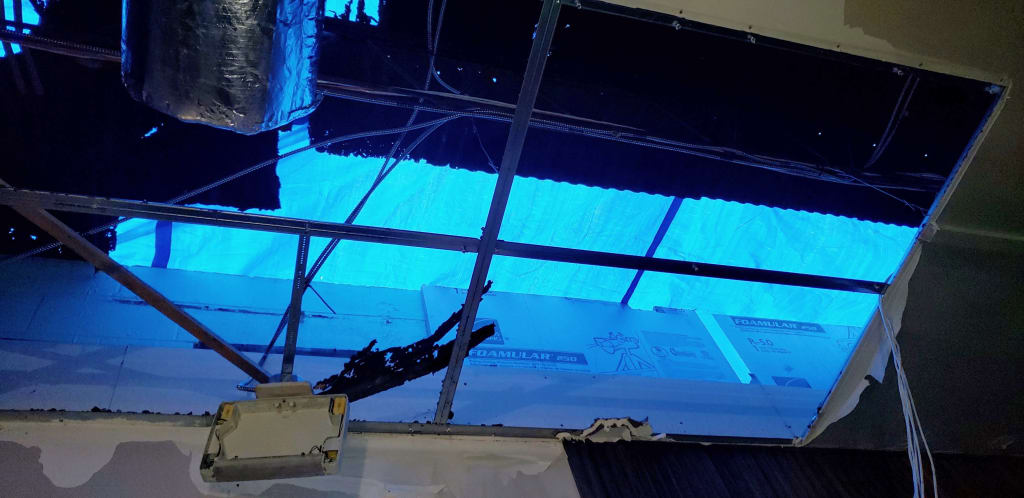It’s hard to believe it’s been three years since an EF3 tornado tore across Nashville and Mt. Juliet. Blue Chip was on the scene in East Nashville the morning after that storm back in March of 2020 and it was a sight none of us will forget. Many times, these storms pop up with little to no warning and often they happen overnight. While it may seem like there is no way to prepare in advance for something like this, there are a few steps you can take.
Know the Warning Signs of a Tornado
- Listen for tornado sirens activated in your community and for National Weather Service alerts on your radio, television or phone
- Dark, often greenish clouds
- Large hail
- Visible funnel cloud
- Roaring noise that does not fade after a few seconds
The Difference Between a Tornado Watch and a Tornado Warning
The National Weather Service describes the difference between a tornado watch and tornado warning as:
- Tornado Watch: Be Prepared! Tornadoes are possible in and near the watch area. Review and discuss your emergency plans and check supplies and your safe room. Be ready to act quickly if a warning is issued or you suspect a tornado is approaching. Acting early helps to save lives! Watches are issued by the Storm Prediction Center for counties where tornadoes may occur. The watch area is typically large, covering numerous counties or even states.
- Tornado Warning: Take Action! A tornado has been sighted or indicated by weather radar. There is imminent danger to life and property. Move to an interior room on the lowest floor of a sturdy building. Avoid windows. If in a mobile home, a vehicle, or outdoors, move to the closest substantial shelter and protect yourself from flying debris. Warnings are issued by your local forecast office. Warnings typically encompass a much smaller area (around the size of a city or small county) that may be impacted by a tornado identified by a forecaster on radar or by a trained spotter/law enforcement who is watching the storm.
Seven Steps to Prepare for the Spring Storm Season
1. Stay Alert
Keep an eye on the sky. Sign up for text alerts from your favorite weather app. Listen to the radio or television for National Weather Service updates. If you live in an area where storms are prevalent, invest in a NOAA weather radio so you have access to alerts if your power goes out and cell phone battery dies. If you see or hear a tornado approaching, take shelter immediately.
2. Know Where to Go
The best place to take shelter is in a basement or an interior room on the lowest level of your home. If you cannot access your basement, try to find a small room away from windows, like a closet or a bathroom. Grab your family members, including your pets, and stay in that area until the tornado threat has passed.
3. Have an Emergency Kit Ready
An emergency kit is crucial. This kit should include non-perishable food, bottled water, a first-aid kit, a flashlight, and extra batteries. A blanket can be helpful to have on hand too. It is also a good idea to have a list of emergency contacts in your kit in the event you need to evacuate your home.
4. Protect Yourself
Once you are in your shelter, it is important to protect yourself from flying debris. Cover yourself with a blanket or mattress & protect your head and neck with your hands. If you are in a bathroom, get in the bathtub and stay low protecting your head and neck. Stay away from windows, if possible, as they can be broken from flying debris.
5. Stay Calm
Remember that most tornado storms only last for a few minutes. If you take shelter quickly, you will be safe. Try to stay calm and breathe slowly until the tornado has passed.
6. Check for Injuries
Once the tornado has passed, check yourself and anyone with you for injuries. Call 9-1-1 immediately if there is a serious injury. If there are no serious injuries, assess your home and property for any damage.
7. Check your home for damage
Make sure all weather alerts have cleared before you go outside to check on your home. Be careful of downed power lines that could still be active and be cautious of trees and tree limbs that could still fall. Take as many photographs as you can, both of your home and your belongings, to simplify your insurance claims. Call your insurance agent to report the damage to your home.
Next Steps
If your property has been damaged due to a tornado, follow our tips from our previous post on storm damage. Contact your insurance provider and contact the professionals here at Blue Chip Restoration for professional storm cleanup and recovery services. We can offer immediate help to secure your property and prevent further damage from occurring. We will also work closely with your insurance company to provide them with the proper reporting they require for emergency services.
Services include:
- Emergency board-up service
- Roof tarping
- Demolition and reconstruction services
Stay safe out there!


